Aerated concrete or tongue-and-groove blocks: which is better?
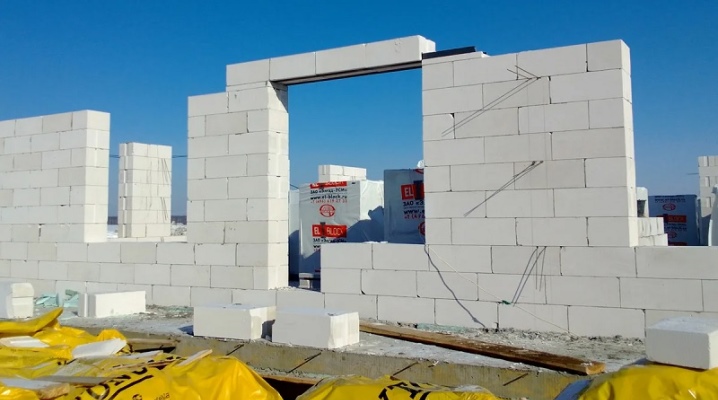
Many suburban homes do not have access to a gas pipeline, so owners have to spend quite a lot of money on electric heating during the heating season. However, a low-rise building can be made as warm and comfortable as possible if you use concrete blocks with cells during construction. Such houses are made of aerated concrete or tongue-and-groove slabs. The blocks differ in many ways, but there are some common features. A simple comparison will allow you to make the best choice.

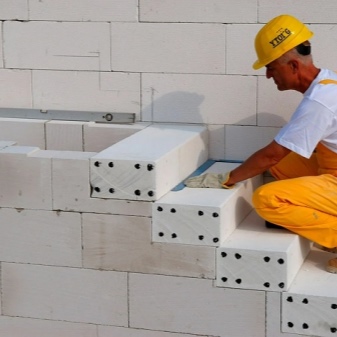
How are materials made?
For the manufacture of aerated concrete, high-pressure furnaces and autoclaves are used. Alternatively, you can leave the material to mature in a room with a certain temperature and a high percentage of humidity. Tongue foam blocks are poured into molds and left for 12 hours. Then they also mature for about 28 days. It turns out that there is not much difference in the technology itself. Separately, it is worth considering the ingredients from which the mixtures are made. The tongue-and-groove is made of cement marked M500, water and sand. And also the composition of GWP includes a special foaming additive.
Aerated concrete consists of water, sand, cement - and here the similarities end. Lime is additionally added to the composition, as well as aluminum powder or paste for porosity. The ingredients in both cases are of low cost. However, it is worth paying attention to the different additives that provide porosity. It is for this reason that the tongue-and-groove will be 20-30% cheaper than aerated concrete of the same density.
And also do not forget that in the production of one of the materials, more advanced and expensive equipment is used.


Comparison of the main characteristics
Both types of blocks are usually used with brick cladding. If all standards are met during production, then the materials will be completely safe. Sometimes slag is added to the mixture, which, if held incorrectly, begins to release toxins into the air. It should be noted that lime in aerated concrete slabs is safe, as it changes the molecular composition in the autoclave.
Other important characteristics are worth mentioning.
- Strength and density. The structure can be heterogeneous. For aerated concrete, this is true if a high-pressure oven was not used. The autoclave material is homogeneous. A high-quality aerated block and a tongue groove have the same density, which is indicated by the letter "D". Even minor deviations from the technology during aging lead to a deterioration in performance. When buying, it is recommended to leave both materials indoors or outdoors under the film for several weeks. Only the autoclave gas block can be installed immediately. The latter, by the way, is much better than the usual tongue-and-groove. A more uniform structure allows you to not be afraid of cracking.
- Resistant to moisture and frost. Aerated concrete has channels between cavities, and there is no connection in GWP. So, the latter conduct heat worse, but perceive high humidity better. In any case, when using porous concrete, it is recommended to make waterproofing.
- Shrinkage. Everything is extremely simple here - aerated concrete wins. It gives no more than 0.5 mm of shrinkage per meter. The tongue-and-groove blocks can be reduced more significantly. Shrinkage varies from 1 to 3 mm per meter. A high-quality foundation reduces the settlement of the building, in this case there is no risk of cracking the blocks.A large shrinkage of concrete blocks is possible only if the storage conditions were violated during the aging of the composition or too much water was added to the mixture.
- Geometry. The different block sizes are due to the cutting methods. The autoclave gas block will always be smoother. For cutting it in production conditions, special strings are used. Available tongue and groove blocks are made in small factories and cut by hand or using outdated technologies. As a result, the edges do not coincide with each other. To solve the situation, more mortar is used when laying, and at the end a primer is applied.
- Heat resistance. Aerated concrete is durable, the walls can be made thinner. However, GWP retains heat better. True, it has to be laid with a thicker masonry.

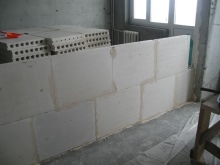
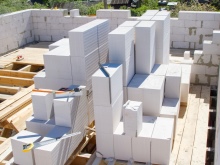
What is the best choice for construction?
Working with concrete cellular blocks is much easier than with classic bricks. For cutting, a simple hacksaw is used, well sharpened. Everything spoils fragility. If the tongue-and-groove block or aerated concrete falls, then there will certainly be a crack or chip. You should treat such building material as carefully and carefully as possible. At erection of external walls, you can use aerated concrete marked D400 or D500. The tongue-and-groove block should have a higher density. Material with the designation D800 and above is suitable. If you cannot find a suitable option, then thicker walls should be erected. This will compensate for the disadvantage.
It is not recommended to use a gas block for the bathroom. He does not perceive high humidity well. For walls and partitions in a bath, toilet and other similar rooms, it is better to take a tongue-and-groove block. It is worth noting that both types of materials are lightweight and do not load the foundation much. High quality aerated concrete blocks are non-combustible and environmentally friendly. The special structure ensures good breathability. The same nuance contributes to the fact that the blocks are quickly saturated with moisture. If there are breaks during the construction of the walls, then both types of materials should be covered with foil. At the very end, the facade should be tiled so that excess moisture comes out unhindered.
It is difficult to decide exactly what will be best for construction. When choosing a tongue-and-groove block, you should give preference to reliable manufacturers. The material is of good quality only if the manufacturing, storage and aging processes have not been disturbed. Autoclaved aerated concrete looks quite attractive. However, he does not like high humidity, which means that he is not universal. Partitions inside the building can be made using a more budgetary and practical tongue-and-groove block. However, both types of materials are still recommended to be protected with waterproofing. So the masonry will last much longer.
Aerated concrete is more durable, so the walls of it are made thinner.

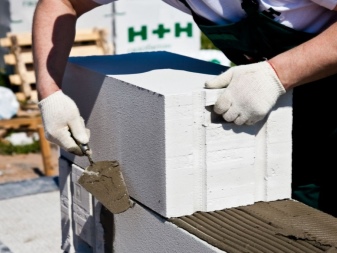













The comment was sent successfully.